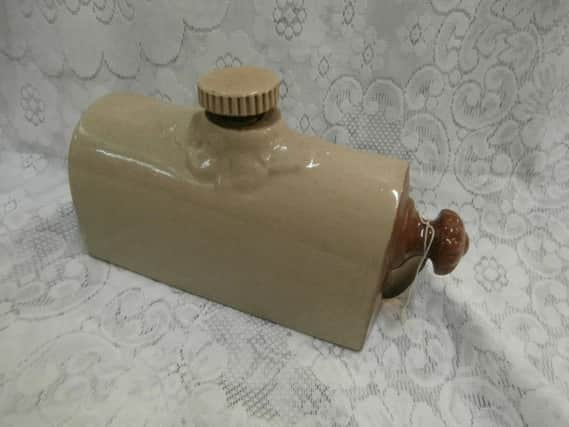Hot water bottles are cosy...but can be valuable antiques too


It’s still chilly out there and, if you’re anything like me, you’ll still be popping a bottle between the sheets before getting in to bed! I love my hot water bottle but they weren’t always so lovely and cosy.
They could also be held in the lap for warmth, but they weren't much good for cuddling or soothing sore
muscles!
Advertisement
Hide AdAdvertisement
Hide AdAfter Charles Goodyear created vulcanised rubber in the 1830s that could withstand heat without melting, the rubber hot water bottle we’d recognise today was not far behind, with Slavoljub Eduard Penkala, a Croatian inventor, patenting the first commercial hot water bottle in 1903.
However, containers for warming beds were used as early as the 16th century, when it was still common practice for the whole family to share a bed.
This was for warmth and security, with a complex hierarchy of bed-sharing etiquette!
Lack of central heating meant the bed was a cold, damp place, so as separate bedrooms became customary, bed-warmers became a common household item. Initially containing hot ashes or heated river stones, later, hot water was used. These vessels were made from zinc, glass, and wood, wrapped in a soft cloth bag to prevent dirt and burning.
Advertisement
Hide AdAdvertisement
Hide AdLong-handled copper or brass ‘warming pans’ containing hot coals heated in an open fire were then placed between the bed covers. They were very heavy for the poor housemaid whose job it was to warm the beds each night, and to remove them before the family retired, to prevent scalding.
These are the type that can often be seen when visiting stately homes, or hanging on a country pub wall alongside the horse brasses.
In more well-to-do houses, it was even customary for a servant to be sent to bed first, in order to personally warm his master’s sheets! This pastime was considerably less dangerous than using a warming pan, as many beds were destroyed by fire.
However, for the less fortunate, hot bricks wrapped in brown paper were a crude substitute for a hot water bottle. So next time you snuggle into bed, cuddling your soft bottle with its fluffy cover, smile – it could have been a brick!
